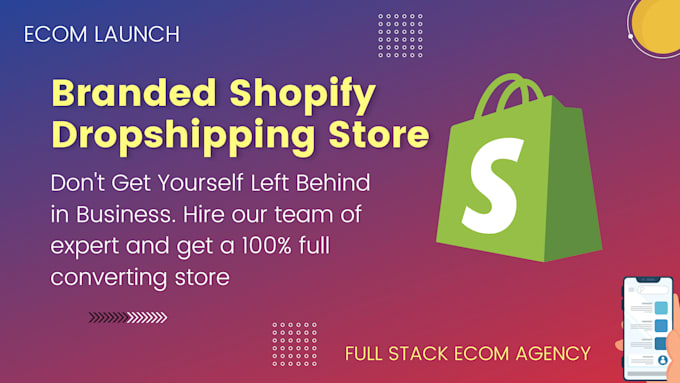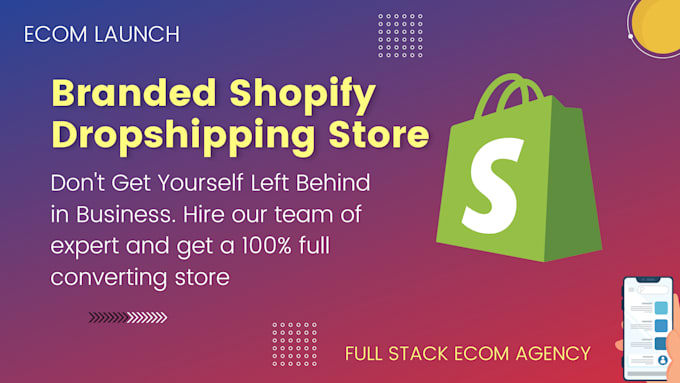Launch a High-Converting Shopify Store with Experts: A Step-by-Step Guide
As an entrepreneur, launching a successful e-commerce store on Shopify can be a daunting task. With millions of online shoppers competing for products and attention, standing out in the market can be a challenge. However, with the right guidance and tools, you can create a high-converting Shopify store that drives sales and builds a loyal customer base. In this article, we’ll explore the steps to launch a high-converting Shopify store with experts.
Why Choose Shopify?

Before we dive into the steps, let’s consider why Shopify is the ideal platform for launching a high-converting e-commerce store. With over 4 million active businesses using Shopify, it’s one of the most popular e-commerce platforms on the market. Here are some reasons why Shopify stands out:
- Ease of use: Shopify offers a user-friendly interface and a vast array of features that make it easy to set up and manage an online store.
- Customization: With a wide range of themes, templates, and customization options, you can create a store that reflects your brand identity and aesthetic.
- Scalability: Shopify is equipped to handle high volumes of traffic and sales, making it an ideal choice for businesses that are rapidly growing.
- Integration: Shopify integrates with a range of payment gateways, shipping providers, and third-party apps, making it easy to manage your store’s operations.
- Security: Shopify prioritizes security, with dedicated servers and regular backups to protect your store and customer data.
Step 1: Plan Your Store with Experts
Before launching your Shopify store, it’s essential to plan and strategize with experts. This involves:
- Market research: Conducting market research to identify your target audience, their needs, and preferences.
- Product selection: Choosing products that are in demand, align with your brand identity, and meet market trends.
- Competitor analysis: Analyzing your competitors to identify gaps and opportunities in the market.
- Store branding: Developing a unique brand identity, including a logo, typography, and visual aesthetic.
Consult with experts, such as management consultants, market researchers, or branding specialists, who can provide valuable insights and recommendations for your store.
Step 2: Set Up Your Store Correctly
With your plan in place, it’s time to set up your Shopify store correctly. This involves:
- Registering your domain: Registering a unique domain name that reflects your brand identity.
- Setting up payment gateways: Integrating payment gateways, such as PayPal or Stripe, to facilitate transactions.
- Configuring shipping options: Setting up shipping options, including rates, carriers, and delivery times.
- Installing necessary apps: Installing apps that enhance your store’s functionality, such as inventory management, customer support, or marketing tools.
Make sure to correctly configure your store’s settings to ensure a seamless shopping experience for your customers.
Step 3: Develop a Pricing Strategy with Experts
Pricing is a critical aspect of your store’s success, and it’s essential to develop a pricing strategy that balances profitability with customer demand. This involves:
- Determining pricing models: Choosing a pricing model, such as cost-plus or value-based, that aligns with your business goals.
- Setting prices: Setting prices that are competitive, profitable, and relevant to your target audience.
- Creating pricing tiers: Creating pricing tiers or promotions to incentivize customers to purchase more.
- Analyzing pricing dynamics: Regularly analyzing pricing dynamics, including market trends, competitor pricing, and customer feedback.
Consult with experts, such as pricing strategists or financial advisors, who can provide guidance on developing a pricing strategy that drives sales and revenue.
Step 4: Create a Compelling User Experience
A great user experience is essential for converting visitors into customers. This involves:
- Developing a user-friendly interface: Creating a store that is easy to navigate, visually appealing, and optimized for mobile devices.
- Improving website speed: Ensuring your store loads quickly and efficiently, with optimization techniques such as image compression and caching.
- Enhancing browser experience: Providing a seamless shopping experience across different browsers, including Safari, Chrome, and Firefox.
- Increasing engagement: Creating engaging content, such as blog posts, videos, or social media integrations, to build brand awareness and customer loyalty.
Invest in creating a user-friendly store that resonates with your target audience and encourages them to stay longer and purchase more.
Step 5: Leverage Effective Marketing Strategies
Marketing is critical for driving traffic, generating leads, and increasing sales. This involves:
- Developing a content marketing strategy: Creating high-quality content, such as blog posts, videos, or social media posts, that educates and engages your target audience.
- Leveraging social media: Using social media platforms, such as Facebook or Instagram, to reach your target audience and drive traffic to your store.
- Email marketing: Building an email list and sending targeted campaigns to drive sales and increase customer loyalty.
- Search engine optimization (SEO): Optimizing your store for search engines, including meta descriptions, keywords, and internal linking.
Hire experts, such as digital marketing specialists or social media managers, who can provide guidance on developing effective marketing strategies that drive results.
Step 6: Analyze and Optimize Your Store’s Performance
To ensure your store is performing optimally, it’s essential to regularly analyze and optimize its performance. This involves:
- Tracking key performance indicators (KPIs): Monitoring KPIs, such as conversion rates, average order value, or customer retention, to identify areas for improvement.
- Conducting A/B testing: Running experiments to test different variations of your store’s design, functionality, or marketing campaigns.
- Gathering customer feedback: Collecting customer feedback through surveys, email, or reviews to identify areas for improvement.
- Regularly updating software and security: Regularly updating your store’s software and security features to ensure it remains secure and up-to-date.
Consult with experts, such as analytics specialists or IT consultants, who can provide guidance on analyzing and optimizing your store’s performance.
Conclusion
Launching a high-converting Shopify store requires careful planning, execution, and ongoing optimization. By following the steps outlined in this guide, you can create a store that drives sales, builds customer loyalty, and sets you up for long-term success.
Call-to-Action
Thanks for reading this article on launching a high-converting Shopify store with experts! We’d love to hear your thoughts on how to improve your store’s performance.
Share this article with others in your network, and let’s start a conversation on how to create successful e-commerce stores.
Happy shopping!


